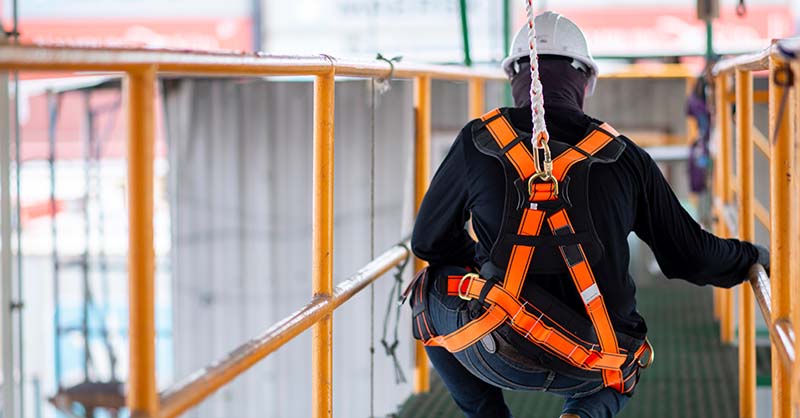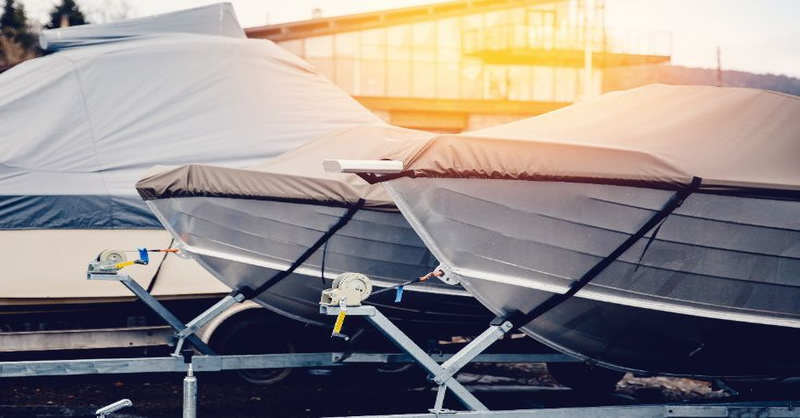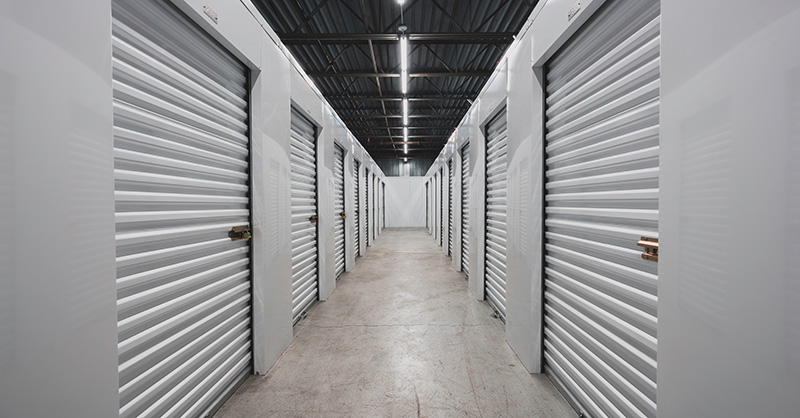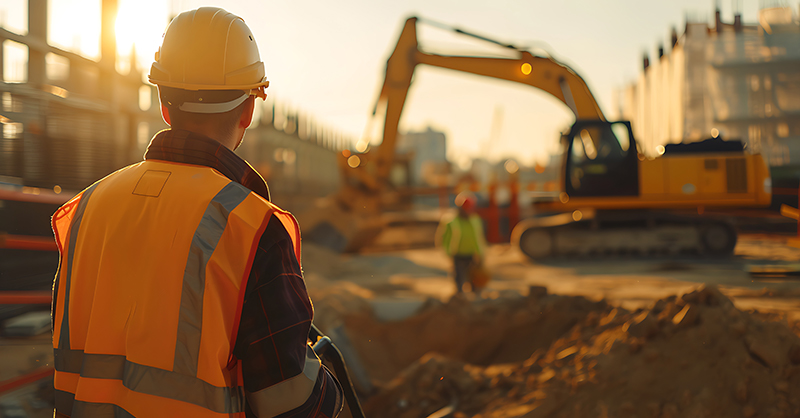Your Guide to Fall Protection in the Construction Industry

Falls constitute the leading cause of fatalities among construction workers, accounting for one-third of all on-the-job deaths within the industry. According to the latest data from the U.S. Bureau of Labor Statistics, a staggering 401 construction fatalities in 2019 were attributed to the improper use of fall protection. While construction falls can be deadly, it’s important to remember they are also preventable.
What is Fall Protection?
Fall protection refers to a system of measures and equipment designed to prevent individuals from falling or being injured due to falls, particularly in industries where working at heights is common. The goal of fall protection is to minimize the risk of injuries and fatalities resulting from falls by implementing preventive measures and safety protocols.
At What Height is Fall Protection Required?
OSHA regulations for fall protection varies across industries. Below is a general listing of when OSHA fall protection is required based on working heights.
- General Industry – Four feet or more above a walking/working surface.
- Shipyards – Five feet or more above a walking/working surface.
- Construction Industry – Six feet or more above a walking/working surface.
- Long-shoring – Eight feet or more above a walking/working surface.
- Steel Erecting – 15 feet or more above a walking/working surface.
OSHA standard 1926 Subpart M (1926.501) is the Fall Protection standard that applies to construction work. This also applies to construction work at less than six feet when working near dangerous equipment. For example, working over machinery with open drive belts, pulleys or gears or open vats of degreasing agents or acid.
What Construction Areas and Activities Does OSHA Subpart M cover?
The OSHA standard identifies certain areas and activities where fall prevention or falling object protection may be needed. For example, it might require fall prevention for a worker who is:
- On a ramp, runway or another walkway
- At the edge of an excavation
- In a hoist area
- On a steep roof
- On, at, above or near wall opening
- On a walking/working surface with holes (including skylights) or unprotected sides or edges
- Above dangerous equipment
- Above a lower level where leading edges are under construction
- On the face of formwork and reinforcing steel
- Or otherwise walking/working on a surface six feet or more above a lower level
The standard may also require fall prevention where a worker is:
- Constructing a leading edge
- Performing overhand bricklaying and related work
- Engaged in roofing work on low-slope roofs and precast concrete erection
In addition, the standard requires falling object protection when a worker is exposed to falling objects.
NOTE: This is not intended to take the place of any OSHA standard nor is it intended to be an interpretation of existing OSHA standards. For complete guidance and a listing of the Federal OSHA standard in its entirety, please consult the Federal OSHA website at www.osha.gov. Depending on the state that the work is being performed, there may be additional requirements related to fall protection on the construction site. Consult the appropriate state department for worker safety for additional guidance.
Examples of Fall Protection Requirements Based on Working Surface
Leading edges, overhand bricklaying, low-slope roofs, steep slope roofs and other walking and working surfaces all present their own unique challenges and risks. Below you’ll find the fall protection measures that should be put in place when working in these conditions.
Leading Edges
Each worker constructing a leading edge six feet or more above a lower level must be protected by guardrail systems, safety net systems or personal fall arrest systems.
The exception is when the employer can demonstrate that it is infeasible or creates a greater hazard to use these systems. In this situation, OSHA requires the employer to develop and implement a fall protection plan.
Workers must be protected by guardrail systems, safety net systems or personal fall arrest systems, even if they are not engaged in leading edge work, if they are on a walking/working surface that is six feet or more above a level where leading edges are under construction.
Overhand Bricklaying and Related Work
When workers perform overhand bricklaying and related work six feet or more above a lower level:
- They must be protected by guardrail systems, safety net systems or personal fall arrest systems; or
- They must work in a controlled access zone (CAZ).
All workers reaching more than 10 inches below the level of the walking or working surface on which they are working must be protected by a guardrail system, safety net system or personal fall arrest system
Roofing Work on Low-Slope Roofs
A steep roof has a slope greater than a ratio of 4 in 12 (vertical to Horizontal). When working on a steep roof that has one or more unprotected side(s) or edge(s) six feet or more above lower levels, each worker must be protected by:
- Guardrail systems with toeboards;
- Safety net systems; or
- Personal fall arrest systems
Other Walking or Working Surfaces
In general, any worker on a walking/working surface six feet or more above a lower level must be protected from falling by a guardrail system, a safety net system or a personal fall arrest system.
Hoist Areas
Workers in a hoist area must be protected from falling six feet or more by guardrail systems or personal fall arrest systems. There may be times when the guardrail systems (or chain, gate or guardrail) must be removed in whole or part to facilitate hoisting operations.
For example, during the landing of materials, a worker may need to lean through the access opening or out over the edge of the access opening to receive or guide equipment and materials. At such times, a personal fall arrest system must be used to protect the worker from falling through the unprotected opening.
Ramps, Runways and Other Walkways
Workers on ramps, runways or walkways must be protected by guardrail systems against falling six feet or more.
Holes
Workers on a walking/working surface must be protected from falling through holes (including skylights) that are more than six feet above lower levels, by personal fall arrest systems, covers or guardrail systems erected around such holes.
Workers must also be protected from tripping in or stepping into or through holes (including skylights) by covers. Covers should be demarcated to notify workers of a hole underneath the cover.
Excavations
Workers at the edge of an excavation six feet deep or more must be protected from falling by guardrail systems, fences or barricades when the excavation cannot be readily seen because of plant growth or another visual barrier.
Workers at the edge of a well, pit, shaft and similar excavation six feet deep or more must be protected from falling by guardrail systems, fences, barricades or covers.
Dangerous Equipment
Workers six feet or more above dangerous equipment must be protected by guardrail systems, safety net systems or personal fall arrest systems.
When working less than six feet above dangerous equipment, workers must be protected from falling into or onto the dangerous equipment by a guardrail system or equipment guards.
Wall Openings
Workers at, above or near wall openings (including those with chutes attached), where the outside bottom edge of the wall opening is six feet or more above lower levels and the inside bottom edge of the wall opening is less than 39 inches above the walking/working surface, must be protected with a guardrail system, a safety net system or a personal fall arrest system.
Mitigating the Risk of Falling Objects at Elevated Heights
Navigating elevated heights poses a dual threat, endangering individuals with the risk of physical falls and exposing workers to potential danger from falling objects. To mitigate these hazards effectively, let's explore the key risk factors and the proactive measures you can take to help prevent injuries.
Guardrails
When guardrail systems are used to prevent materials from falling from one level to another, any openings must be small enough to prevent the passage of falling objects.
Overhand Bricklaying and Elevated Work
During overhand bricklaying and related work, no materials or equipment except masonry and mortar may be stored within four feet of working edges. Excess mortar, broken or scattered masonry units and all other materials and debris must be kept clear of the working area by removal at regular intervals.
Roofing Work
During roofing work, materials and equipment must not be stored within six feet of a roof edge unless guardrail systems are erected at the edge. Any materials piled, grouped or stacked near a roof edge must be stable and self-supporting.
Toeboards
When toeboards are used as protection from falling objects, they must be erected along the edges of the overhead walking or working surface for a distance sufficient to protect workers working below. Other criteria include:
- Toeboards must be capable of withstanding, without failure, a force of at least 50 pounds applied in any downward or outward direction at any point along the toeboard.
- Toeboards must be at least 3.5 inches tall from the top edge to the level of the walking/working surface, must have no more than 0.25-inch clearance above the walking/working surface and must be solid or have openings no larger than 1 inch in its greatest dimension.
Where tools, equipment or materials are piled higher than the top edge of a toeboard, paneling or screening must be erected from the walking or working surface or toeboard to the top of a guardrail system’s top rail or midrail, for a distance sufficient to protect workers below.
Canopies
When used as protection from falling objects, canopies must be strong enough to prevent collapse and prevent penetration by any objects that may fall onto them.
Fall Protection Plans
It may be infeasible or create a greater hazard to use conventional fall protection for a specific task. In those circumstances, employers may implement a fall protection plan. The employer has the burden of establishing that it is appropriate to implement a fall protection plan instead of implementing conventional fall protection systems.
Elements of a Fall Protection Plan
- A fall protection plan must be prepared by a qualified person and developed specifically for the site where the work is being performed.
- The fall protection plan must be maintained and kept up to date.
- Any changes to the fall protection plan must be approved by a qualified person.
- A copy of the fall protection plan with all approved changes must be maintained at the job site.
- A competent person must supervise the implementation of the fall protection plan.
- The plan must document the reasons why the use of conventional fall protection is infeasible or would create a greater hazard.
- The plan must include a written discussion of other measures that will be taken to reduce or eliminate the fall hazard for workers who cannot be provided with protection using conventional fall protection systems. For example, the employer must discuss the extent to which scaffolds, ladders or vehicle-mounted work platforms can be used to provide a safer working surface and thereby reduce the hazard of falling.
- The plan must identify each location where conventional fall protection methods cannot be used. These locations must then be classified as controlled access zones.
- The plan must include a statement that provides the name or other identification method for each worker authorized to work in controlled access zones. No other workers may enter controlled access zones.
- If a worker falls, or some other related, serious incident occurs (for example, a near miss), the employer must investigate the circumstances to determine if the fall protection plan needs to be changed. For example, the plan may need to add new practices, procedures or training. The employer must implement the necessary changes to prevent similar types of falls or incidents.
OSHA provides a Model Fall Protection Plan here: Model Fall Protection Plan (osha.gov)
Fall Protection Training
Employers must provide a fall protection training program to workers who might be exposed to fall hazards. Training must include how to recognize fall hazards and how to minimize them.
The employer must ensure that each worker has been trained as necessary, by a competent person who is qualified in the following areas:
- The nature of fall hazards in the work area.
- The correct procedures for erecting, maintaining, disassembling, and inspecting the fall protection systems to be used.
- The use and operation of controlled access zones; guardrail, personal fall arrest, safety net, warning line and safety monitoring systems; and other protection to be used.
- The role of each worker in the safety monitoring system when the system is used.
- The limitations on mechanical equipment use during roofing work on low-slope roofs.
- The correct procedures for equipment and materials handling as well as the storage and erection of overhead protection.
- The role of workers in fall protection plans.
- OSHA’s fall protection requirements, published as Subpart M. 29 CFR 1926.503(a)(2)(viii).
Employers must verify worker training by preparing a written certification record. The record must contain the name or other identity of the worker trained, the dates of the training and the signature of either the person who conducted the training or the employer.
When an employer believes that an affected worker does not recognize existing fall hazards after the initial training, the employer must provide retraining for that worker. For example, workers must be retrained when:
- Changes in the workplace render previous training obsolete.
- Fall protection equipment and/or systems have changed.
- Inadequacies in workers’ knowledge or use of fall protection systems or equipment indicate that they have not adequately understood or retained previous training.
Explore our Construction Safety Resource Guide
Help enhance your construction company's safety awareness and injury prevention efforts with our comprehensive Construction Safety Resource Guide. This resource provides essential fall protection training materials. Start improving safety standards now by exploring this guide.









